- Administrator
- Albums and Singles
Kranky and Moongadget artists, Praveen & Benoît, debut first collaboration on Music Related August 26th.
New MP3: Embers
It's all in the wires. Praveen Sharma and Thomas Meluch (aka Benoît Pioulard) have met only a handful of times and have never resided in the same city, but over the course of two-plus years they have been quietly assembling Songs Spun Simla, a brief but luminescent collection of pieces driven by Praveen's inventive arrangements and Benoît's lush vocal harmonizing.
Praveen released his remarkable debut Backed by Spirits on the now-defunct Neo Ouija imprint just as Benoît emerged with the Enge EP on Michigan's Moodgadget label in early 2005. Through mutual contacts they found that each was an admirer of the other's work, and the seeds for a casual collaboration were sown. Not long after, Praveen returned from a profound journey through his family's native India with a minidisk full of field recordings and voices, forming the basis of opener "The Tunnel is Still There". As he continued creating new songs with an ever-expanding palette of instruments and digital effects, Benoît arranged lyrics and harmonies, driven by the unfamiliarity and excitement of the process. Various ideas arose concerning the fate of these works, but once a record's worth had been amassed, their friends at Music Related expressed interest in a proper release.
Songs Spun Simla is named in honor of the village in India from which Praveen's family originates - it's inseparable from his musical inspirations yet still distant and shaped largely by memory. His compositions exist on a fitting scale, then; from the stunning, expansive lead-in of "Death as a Man" to the incredibly detailed percussion of "To Scale", there's a sense of worldliness, history and nostalgia placed in a crucible with technology and innovation. Much like a travelogue, the six movements of Songs Spun Simla abut soaring highs with passages of quiet, intimate beauty to create a deeply affecting whole.
Praveen Sharma has been making music for most of his life, and has contributed releases to AI, Neo Ouija, and Expanding Records. He also runs Percussion Lab, a hub for underground electronic music and exclusive DJ sets, in addition to being an avid live performer and event organizer in New York City.
Thomas Meluch (aka Benoît Pioulard) began playing piano at age five and has been recording music and field sounds with various devices for nearly as long. He lives in Portland, Oregon, where he recently finished the follow-up album to the highly acclaimed Précis (2006) for the indie stalwarts at Chicago's Kranky.
Read More
- Administrator
- Albums and Singles
 When everything went quiet in the Tindersticks camp a few years ago, Stuart Staples released a couple of solo albums, Dickon Hinchliffe started doing soundtracks and I was worried that the group was no more. A couple of Tindersticks compilations were released (a greatest hits and a BBC sessions double CD) but these felt like posthumous releases, nails in a coffin I was hoping did not exist. However, despite losing half its members, the band continues and has returned with a wonderful album that sounds like it could have been by the full line up in their prime.
When everything went quiet in the Tindersticks camp a few years ago, Stuart Staples released a couple of solo albums, Dickon Hinchliffe started doing soundtracks and I was worried that the group was no more. A couple of Tindersticks compilations were released (a greatest hits and a BBC sessions double CD) but these felt like posthumous releases, nails in a coffin I was hoping did not exist. However, despite losing half its members, the band continues and has returned with a wonderful album that sounds like it could have been by the full line up in their prime.
Beggars Banquet (EU)/Constellation (NA)
Hinchliffe’s departure is felt most keenly on The Hungry Saw. His violin playing and occasional vocals were the perfect foil for Neil Fraser’s guitar work and Staples’ baritone voice. The sweeping orchestral arrangements, that made Curtains and the two self-titled albums the masterpieces that they were, are largely gone. The string embellishment on “The Other Side of the World” being the exception rather than the rule. What has happened now is that the guitar has come more to the fore to replace the violin, most notably the fantastic tremolo effected guitar on "E-Type," one of the best parts of the album. The utilisation of a brass section is thankfully still a feature (and now supplemented by some woodwind) so the feeling the band now captures is the gritty and bitter love songs of the earlier albums mixed with the focus on country music from Staples’ solo albums.
The Hungry Saw does not swing as strongly as the classic Tindersticks albums but it is stronger overall compared to Waiting for the Moon or Can Our Love..., perhaps a massive shift in personnel was needed to get the song writing muscles back into shape. From the opening piano intro up until the end of the album, each song captures the heart and soul completely. Staples’ lyrics are as wonderful as usual, mixing the humdrum with the most potent emotions to create the kind of songs that are something much more than simple melodies and rhymes.” Yesterday’s Tomorrows” and the title track stand slightly above the other songs as being particularly great but really it is impossible to pick out favourites from such a stellar choice.
That a band can continue after so many years and such a dramatic loss of members as has happened with Tindersticks and still come out with an album as polished and good as The Hungry Saw is no small feat. As a long time fan of the band, I am of course delighted to see them back in any form and with any luck they will continue long into the future.
samples:
Read More
- Administrator
- Albums and Singles
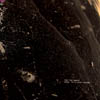 I would have to consider the title of this disc either a misnomer or an intentional joke. As a recording, it is definitely warm and inviting, and though almost entirely based on looped elements, has an organic feel unmatched by most similar projects.
I would have to consider the title of this disc either a misnomer or an intentional joke. As a recording, it is definitely warm and inviting, and though almost entirely based on looped elements, has an organic feel unmatched by most similar projects.
The album has a dark, earthy feel that is only enhanced by the layer of audio grime that is intentionally placed over almost every track here. Every piece has a layer of crackling like old vinyl surface noise or decaying tape that gives the entire work a well worn, familiar feeling. When I say “dark” I don’t mean in the scary or black metal sense, but more in the ambiguous, unclear sense. The layers of loops that build from track to track make each piece more disorienting, but never to the point of absolute chaos. Instead, restraint is exercised.
Even though most of the tracks are built upon layered loops, the source of the loops is pretty much organic and is often guitar or piano. The opening “My Lowville” runs along with noisy analog elements and backward melodies, but the plaintive guitar loops above it provide a gentle counterpoint. As the layers of guitar and effects pile on, the track reaches a crescendo of chaos that rivals the best of the old shoegaze bands. “Auto Show Day of the Dead” follows a similar pattern, but leaning more on piano and tremolo guitar loops that begins to get more noisy towards the second half, but take on a digital sheen that is somewhat out of place with the remainder of the disc.
The subtlety of “Fucking Milwaukee’s Been Hesher Forever” is contradicted by its title, because the piece is probably the most gentle of the ones here. It doesn’t build to the same chaotic climax as some of the others do, but stays more subtle throughout, focusing on the gentle guitar loops that make up the bulk of the mix. “Re: We’re Again Buried Under” is not really any more aggressive, but is more abstract, seemingly based more on synth and other electronic elements, thus giving it a more sci-fi feel that’s enhanced by the warbling noisier spots.
The closing “The Surge Is Working” begins with guitar that has, of all things, a southern rock type vibe to it before the guitar gets louder and more chaotic than it did on any of the previous tracks. The entire piece has a more aggressive, forceful tone to it that culminates in some unexpected blasts of noise near the end, before retreating into the sounds of the vinyl surface noise that was omnipresent throughout.
An odd amalgam of electronic drone, cut and paste abstraction, and post-rock experimentation, The Fun Years have put out an interesting record here that doesn’t sound like much else. The odd thing is, for all its uniqueness, the overall atmosphere is one of familiarity and comfort, even though there’s no easy comparisons to draw.
samples:
Read More
- Administrator
- Albums and Singles
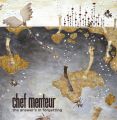 Chef Menteur’s second full length retains the sense of a group setting obscure crossword clues while working out what their equipment will do. The sound is deeper and tighter but doesn’t completely abandon post-space-drone- audio-collage.
Chef Menteur’s second full length retains the sense of a group setting obscure crossword clues while working out what their equipment will do. The sound is deeper and tighter but doesn’t completely abandon post-space-drone- audio-collage.
Alec Vance and Jim Yonkus remain from Chef Menteur’s 2005 debut, We Await Silent Tristero’s Empire. That’s all well and good, but Dan Haugh’s drumming and (on one track) Brian Abbott’s banjo and sitar, bring fresh energy and discipline into the mix. Not that either of them seems responsible for the biggest surprise: the first bars of this album feature Vance simply strumming an acoustic guitar. Given the band’s previous catalogue and performances it’s as unlikely an opening as if they’d covered “Do You Think I’m Sexy?”
However, The Answer’s in Forgetting does not completely kick out the jams. “Parasitic Oscillation” goes back and forth between darkness and nothingness in a pointless manner before providing perfect contrast to ”Tonalli,” which swings in on percussive breaks and a lovely piano figure. “1491” scorches along like the comet of that year which came closer to Earth than any other. Again the track provides neat contrast when it bleeds into “I.E.D.,” a Mogwai-esque excursion that shows the benefit of Haugh’s dynamics and actual melody in the guitar lines. If they keep this up they’ll write an actual song with verses and a chorus! As if to scratch that thought, the subdued drone of “Goodbye Callisto” follows— an ode to sandals, a nymph, a moon, or more likely a tribute to Xena’s nemesis. “OT III” ends the disc in a brief punchy swirl of banjo, sitar and synth which perhaps references the band’s “Oceanic 23” track from a WTUL radio compilation, or not.
Some of the pieces here rival Chef Menteur’s finest earlier track “W.A.S.T.E.” which used the voices of New Orleans trash collectors as the basis of a sublimely rhythmic nod to Thomas Pynchon’s The Crying of Lot 49. Given a pleasing penchant for the obscure it can only be a matter of time before they title a piece “Remembering the Octahedron”.
For now the band eschew lyrics but, given that they (or possibly just Vance) enjoy linguistic puzzles and literary references, that too could change. Best keep a dictionary handy, anyway, as they understand the value and fun of naming a track “Trebuchet” rather than, say, “Shoebox Diorama.” With The Answer’s in Forgetting and Potpie’s Potpie Plays the Classics the back porch revolution continues to gain momentum.
samples:
Read More
- Administrator
- Albums and Singles
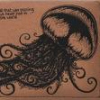 Every once in a while something extraordinary manages to come my way with a power that is hard to deny. Such is the case with this London-based band's debut album, a stratospheric collection of musically mature, beautifully crafted, and subtly layered compositions that refuse to remain earthbound. This is the vision and brainchild of just one individual—Oliver Barrett, only in his early 20s and literally fresh out of University.
Every once in a while something extraordinary manages to come my way with a power that is hard to deny. Such is the case with this London-based band's debut album, a stratospheric collection of musically mature, beautifully crafted, and subtly layered compositions that refuse to remain earthbound. This is the vision and brainchild of just one individual—Oliver Barrett, only in his early 20s and literally fresh out of University.
BHN’s music is built up of deeply harmonic sedimentary drone layers of cello, simple piano lines repeated to create a beguiling complexity, cascading guitars, feedback loops, noise, and the whole occasionally augmented with understated vocals that seem to inhabit the interstices of every note played. Furthermore, noise and accident play an equal part, and occasional scrapes of fingers against strings and the creaking of chairs can be discerned. These have been deliberately left in; Barrett believes that each and every one of these noises forms an integral part of the performance. These undoubtedly introduce new textures and a unique aesthetic to both the creative and recording processes employed here. However, rather than feeling that I was listening to some kind of rarified intellectual construction whose understanding stood way out of reach, I felt instead that every nuance was physically seeping into my consciousness and making me part of the experience. As a part of that experience I felt that the mundane world was left far behind, and I was floating in the skies of another world entirely.
The album crashes in with “BHN,” a thick miasmatic cacophony of cello that wouldn’t be out of place on some psychedelic noise album. After this introduction, any preconceptions I harbored were devastatingly, not to say pleasantly, confounded when out of the fog emerged the slightly out-of-tune piano figure of “As If Yearning Was All and More than Enough.” Cello and stabbed piano chords underline and punctuate, deepening the mood. Gently following on from that is the spine-tinglingly and shatteringly beautiful “Black Glass,” the piano and layered cello interplay being perfectly complemented by the subtle and quietly harmonized male and female vocals. I found it difficult not to be affected by the simple power and strength of this song. My mind soared to beautifully crisp and clear winter nights at twilight when the stars are just beginning to peek out from behind the thick veil of day.
Subtle layers of shimmering feedback and strings prevail on “A Nest,” wrapping and cocooning. This is an eight minute track of minutely-building blissed-out drones, totally enveloping the body in a warm blanket of pure tones. More than that though, the harmonics lazily but playfully chase each other throughout its entire length. “Discovering Abandoned Houses” injects a hauntingly melancholic and isolationist element here, while “Finding the Door,” starting off with harmonised voice, soon breaks out with uplifting piano and sweeping cello lines.
This is a marvellously complex album, displaying a compositional maturity usually garnered through decades of experience and learning. In some respects, Barrett has indeed compiled a couple of decades of musical exploration already, having started learning cello at age four. What singles him out, though, is the fact that rather than staying within the rigid confines of classical music, he broke out into rock in his teen years. Couple the taking on of all those influences with an additional delve into the experimental end of the spectrum, and it could be concluded that his musical education has inevitably become broader than many. All these seemingly disparate elements coalesce and merge together here, and what results is a startling album that certainly in my view stands head and shoulders above many a debut.
Samples
Read More
- Administrator
- Albums and Singles
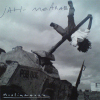 By all accounts Bryn Jones of Muslimgauze was a prolific musician, as any glance at his discography will confirm. Even nigh on a decade after his untimely death, new (or rather previously unreleased) material is still emerging steadily into the light of day. Jah-Mearab is one such, bringing together unheard material originally recorded in 1998 and simultaneously inaugurating a whole series of archive CDs to be issued by his European label.
By all accounts Bryn Jones of Muslimgauze was a prolific musician, as any glance at his discography will confirm. Even nigh on a decade after his untimely death, new (or rather previously unreleased) material is still emerging steadily into the light of day. Jah-Mearab is one such, bringing together unheard material originally recorded in 1998 and simultaneously inaugurating a whole series of archive CDs to be issued by his European label.
It is intensely difficult to separate the music of Jones from his politics, now more so than ever. Today’s fragile political climate somehow makes his music more relevant, given the Western hemisphere’s seeming paranoid obsession with ‘radical’ Islam. It would be fascinating perhaps to see how his music would be received today, whether he would be branded a terrorist sympathizer simply because of his espousal of the aims of the Palestinian peoples and his support for Hamas. All that however is by the by; as inextricably and tangibly bound up as the music of Muslimgauze was in the miasma of politics of the Near East, it yet retains an independent flavor all its own.
Jones was able to bridge the gulf between the Western and Eastern hemispheres, spanning (and understanding) the more traditional forms of Arabic music, as well as styles of ‘eastern’ music built upon Western foundations. The difference though is that Jones brought with him a deep respect for the music of that region, and he never allowed his interpretations to fall into cheesy bastardizations. What he managed in some respects was to make the fusion with Western hip-hop and dance rhythms, for instance, seem like nothing more than the next logical evolutionary steps from their traditional antecedents, and this is emphatically underscored on this album. For instance, “In Search of Sudan Nerve Gas," is a hip-hop cut-up based around a stuttering beat and a repetitive vocal loop, interspersed with stabs of noise and micro-snatches of instrumentation. Despite the span of a decade since it was recorded, it’s still fresh and vibrant. Similarly, the album opener and title track, “Jah-Mearab,” a laidback trip-hop piece overlaid with market-square voices and song punctuated with rasps and scrapes, sounds as newly-minted and up-to-date as anything released today. Moreover, despite the Western inflections, the two pieces are heavily marinaded in the radical ferment and political flavors of the region. The often calamitous intersection of Eastern and Western politics, and their very different priorities, is brought home well by the fusion of styles here.
Contrastingly, track nine, “Jar of Salahuddin," is very much staking out traditional terrain. Heavy Arabic-style percussive rhythms provide a solid backing for a traditional wailing male refrain, the whole focusing nicely to create an oriental redolence with which we can all identify. However, it’s the furthest thing from being just a mere cultural appropriation. It carries with it a deeply felt sense of authenticity that gives it some weight of authority. Furthermore, even within the more Western-tinted interpretations, there is still that vein of authenticity coursing through them strongly. Regardless of the means that he uses, Jones always manages to aim the message straight for the target.
Jones was an intensely shy, private, and awkward man, someone who obviously preferred to let his music do the talking. That every note he played and recorded was infused with his passionate beliefs and feelings is immediately apparent from even a cursory listen. As an introduction perhaps to his breadth of musical style and vision, along with his strength of political passions and beliefs, Jah-Mearab can be considered a good starting point from which to set out on an exploration of Muslimgauze’s legacy.
samples
Read More
- Administrator
- Albums and Singles
In the early 80s, Robert Haigh released a handful of recordings under his own name, as well as the monikers Sema, Fote, and Truth Club. His atmospheric piano, guitar and sound arrangements were in a class of their own, but ranked among the quality level of other experimentalists such as Nurse With Wound, Current 93, and The Hafler Trio; coincidentally with whom he also collaborated with. These recordings quickly developed a cult following and even today are scarce, some fetching high prices on the collector’s market.
Haigh departed this work in the 90s, moving into an entirely different sound under the moniker Omni Trio. Signing with the esteemed electronic label Moving Shadow, Haigh became highly regarded as one of the originators of drum and bass music, although his style during this time continued to reflect his use of fluid melody and space.
And now, Crouton is absolutely delighted to present his newest work, Written on Water. Within these songs, listeners will hear nods to the distinct melodicism of his early Valentine Out of Season-era solo piano work, while also referencing like-minded composers such as Eric Satie, Steve Reich, and Harold Budd. Gone are the drum machines of his 90s work, yet this new music is as much about rhythm as it is about melody.
Haigh explains,
“These tracks came out of the attempt to find a balance between two of my major interests: counterpoint and economy of structure.
Most music has some form of counterpoint, how one sound or tone relates to another is the key to evoking possibility; an E note paired with an Eb creates an openness where several potentialities of key and structure are suggested. Using too many tones or sounds can have the opposite effect and limit possibilities by over definition – this is where my second preoccupation; economy of structure, comes in.
Structurally instrumental in this is the use of gradual development and apparent repetition. I say ‘apparent’ because in reality no repetition can be found. Every note, tone, sound, etc. is always in a completely new space, unfolding as uncharted flow in the moment.
This quality of ‘always new’ was the inspiration for the title. Like writing on a surface that leaves no trace with every mark, music is the perfect expression (and metaphor) of how ever-fresh reality is when unmediated by the freeze framing of conceptual thought.”
Written on Water is released in a limited, numbered edition of 500, packaged in a letterpressed case. The physical edition also contains a bonus track not available elsewhere.
Read More
- Administrator
- Albums and Singles
 Lustmord's latest, Other finds the ever-busy sound designer, film composer, and reigning king of dark ambient turning in another assured work of drift and despair.
Lustmord's latest, Other finds the ever-busy sound designer, film composer, and reigning king of dark ambient turning in another assured work of drift and despair.
I was about 14 when I first put on a Lustmord cassette, cranked the Walkman up and lay still in a dark room, waiting for something to happen. As it turns out, something did happen—I fell asleep. But something else made that first Lustmord experience memorable. It wasn't falling asleep to drones and dark, cavernous tones that I remembered, it was waking up in a sweaty panic thinking that I had somehow fallen through a long, aching tunnel into hell. There was some loud, banshee squeal that snapped me awake and I immediately turned the cassette off for fear that it was doing irreparable damage to my subconscious.
Now, I sit with Lustmord's latest album, Other, and I realize that what I want out of a Lustmord record couldn't be more simple. In a sense, my relationship with one of these records is fairly one-dimensional. I don't need a lot of dynamics or tunefulness; I don't expect distinct tracks with unique sounds that I can forever pin to a particular part of the record; I don't even want to be surprised by the artist's evolution or technique. I really just want to be scared. I want these records to be the kind of thing that I can put on with the lights off and just get lost in. I don't mean that in a sentimental way, the way one might get lost in a romantic ballad or throbbing trance record. I mean that I literally want to close my eyes, turn up the volume, and forget where I am so that when I am inevitably jarred to attention by a crash or by a nightmare, I have Lustmord to thank for tweaking my brain.
And tweak he does with Other, with the expected mix of drones and tones drenched deep in reverb, far off crashes of thunder or drums (I can't be sure,) and sometimes even recognizable guitar that grinds along to create a rhythm for the madness. Whether it is Lustmord's work in the film industry that has afforded him the ability to create such pristine recordings of darkness, or whether he always had that gift and is just able to exploit it creeping people out in theaters and on video games, I don't know. I do know that Other does not disappoint. It does that one simple thing that I require of a Lustmord record, and it points out that my simple requirement is not itself a simple thing to pull off.
There exists a level of composition present in Lustmord's work that is absent from the efforts of so many of the people he has inspired. There's always a narrative with these songs, and that separates them from run of the mill drone exercises. Of course, Lustmord's impeccable ear for mixing also helps these songs rise to the top of a heap that seems to always be growing with people who are trying to out-do the master of troll-cave ambience. I just don't think it can be done. Other is another grim example of a consummate artist who is working firmly within the parameters that he has laid out for himself over the years. I wouldn't say that much of Other is groundbreaking, but then it absolutely doesn't need to be in order for it to work. It's a fantastically bleak slab of heavy sound that helps me get lost when it's playing. That's the sign of a record to keep.
samples:
Read More
- Administrator
- Albums and Singles
Read More
- Administrator
- Albums and Singles
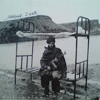 The Tupac of the experimental world, even some nine years after his death, various labels are still issuing posthumous work from Bryn Jones. However, unlike Mr. Shakur, these aren't ramshackle scraps slapped together to make a quick buck, they're simply the product of one extremely prolific artist. The second volume of Staalplaat's Archive Series (the label that, at one point, was receiving a full length DAT a week of new material), this disc compiles mostly previously released material, including the whole Jaagheed Zarb LP that was issued as one fourth of the Tandoori Dog set, three of the four tracks from the MP3 only Melt EP, and three unreleased tracks.
The Tupac of the experimental world, even some nine years after his death, various labels are still issuing posthumous work from Bryn Jones. However, unlike Mr. Shakur, these aren't ramshackle scraps slapped together to make a quick buck, they're simply the product of one extremely prolific artist. The second volume of Staalplaat's Archive Series (the label that, at one point, was receiving a full length DAT a week of new material), this disc compiles mostly previously released material, including the whole Jaagheed Zarb LP that was issued as one fourth of the Tandoori Dog set, three of the four tracks from the MP3 only Melt EP, and three unreleased tracks.
Throughout his prolific, but unfortunately short, career, Muslimgauze had a variety of phases that usually stuck as a thematic, per-album feel. There was the more traditional Middle Eastern tracks, some with a dance bent, some with an overly noisy edge, and some of a purely abstract nature. The bulk of the material on here falls into my favorite phase, the lo-fi hip-hop influenced dubby stuff. Jaagheed Zarb, though it is a collection of different tracks, feels like a coherent work that could have been intended as a full length album.
This style of Muslimgauze is based heavily on repetition, but the tracks never go too long to make them boring, but instead stay compelling. There’s only two “long” tracks, seven to eight minutes each, are also the most idiosyncratic among the collection. If I hadn’t known better, I would assume “Vinoo Mankad Option” and “Hafeez Kardar” were double A sides from a previous 12-inch. The former is one of the more conventional works in Jones’ discography, featuring a steady club influenced beat, more obvious Middle Eastern instrumentation and vocal loops, and little of the usual noisy elements that usually pop up. Other than a few shoddy delays, this could be a different artist entirely. The metaphorical flip side is one of the most abstract works he’s done: sputtering, cut up drums run through a rusty old spring reverb unit, cut up tape and lots of noisy elements.
As a sporadic fan during Muslimgauze’s career (I picked up an album here and there, but didn’t have the income to be a real hardcore listener), I never had the Tandoori Dog box set, so this material is mostly new to me. As aforementioned, it follows the general pattern of other works, heavily focused on hip-hop style beats (according to legend Jones would never use samplers or pre-recorded loops, but played everything live). If this is the case, he does a few very good impressions of the old “Funky Drummer” beat on a few of these. The dub elements are also rather pronounced on here, both “Sari of Human Hair” and “Sari of Dog Hair” feature a more low end kick pulse than the others, subtle organ stabs, and a more open, sparse mix that is more in line with a traditional “version” than the other tracks’ denser, noise tinged pieces.
The tracks that were previously on the “MP3 only” Melt EP (back before this was fashionable) were ones I was more familiar with, and hearing the opening beat, I was taken back to some 10 years ago listening to this material, which is, I’m sure, still on a MiniDisc in my closet somewhere. Both “Melt” and “Turn Left For Jabaliya” from this EP show up in alternate forms on the Tandoori Dog tracks, but as a whole the Melt versions are rougher around the edges and show more of a noise bent.
The three unreleased tracks, “Zionist Leather Clad Koran, “Kiss of Deceit,” and “Nadir Bedu” are somewhat different, but still fit in with the overall feel. The first is a short piece of extremely hissy, slow-paced beat material that sounds like it was pulled from an analog cassette that had been baking in the desert sun. “Kiss of Deceit” is the most traditional hip-hop sounding on here: though using traditional Middle Eastern percussion, the beat is a stiff hip-hop breakbeat, and with bass heavy elements to match. Finally, “Nadir Bedu” leans to the noisy analog synth elements: Jones’ love of Luddite technology is apparent, as are the tabla drums.
It’s cliché by now, but I too wonder if Jones were still alive today how his music would be affected by the current socio-political climate regarding the Middle East and Islam. As aggressive as his work was previously, the extra level of anger that could have been implemented in his art would probably be striking in this day and age. Unfortunately, that will never come to be.
samples:
Read More
- Administrator
- Albums and Singles
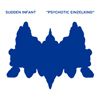 Having been in the field of abstract and noise art for some 19 years now, Joke Lanz is definitely not a neophyte. This album makes that readily apparent in its highly structured, controlled noise elements, but is also willing to step outside of the boundaries of what is expected from him and instead is happy to toss in elements of punk, traditional industrial, and something that is often lacking in this genre: humor.
Having been in the field of abstract and noise art for some 19 years now, Joke Lanz is definitely not a neophyte. This album makes that readily apparent in its highly structured, controlled noise elements, but is also willing to step outside of the boundaries of what is expected from him and instead is happy to toss in elements of punk, traditional industrial, and something that is often lacking in this genre: humor.
With roots in his native Swiss Dada movement, it is almost expected that Lanz would have an absurd bent to his art, which is a breath of fresh air in a genre that, for the most part, takes itself entirely too seriously. On “Trees Are My Friends” this is beautifully apparent: while the backing track channels classic Neubauten chaotic metal drumming and noisy, rough bass guitar work, Lanz delivers lines like “These dogs are pissing on my tree all the time and I don’t fucking like that!“ in a classic power electronics delivery right out of Whitehouse albums like Buchenwald, but is far more fun and jovial.
Few of the songs on here actually have that “traditional” noise feel. “Deep Cuts” does have its share of unidentifiable processed screams and some pure noise elements, but exercises more restraint and focuses more on textures rather than terror. The massive “Slomono” is similar in its construction of guitar cable noises, ultrasonic high-end tones and feedback. Rather than blasting, it is more content to simply lurk all creepy-like in the darkness.
Other tracks show an obvious influence from other artists, but it is just that, influence. “Boy In A Wheelchair” definitely has traces of classic Throbbing Gristle and especially SPK in its deep bass thump, audible vocals and noisy blasts of static and feedback, but also demonstrates that sense of careful construction that those artists were also known for. “Tandoori Chicken Scooter III” has a structure more in line with the punk influnced bands of today, such as Wolf Eyes, but has a percussion track that sounds like its built from old kung fu movie fight samples and that almost-not-there level of controlled chaos. Others are more than happy to be overtly punk in nature: “Somniphobia” has a traditional, though metal, percussion and traditional bass guitar over looped Middle Eastern elements and the occasional burst of noise. It has a familiar, conventional feel, but is still in its own galaxy entirely.
Finally, a few tracks are just completely “out there” in the most brilliant way: “Bamblood” is built on the most unnatural sounds that can be made with the human mouth, and no, not just the voice. Put over a backward bass guitar track and, though entirely bizarre, retains a rhythmic, captivating feel. “Dies Irae” opts for a different level of weirdness with its almost techno synth sequence, bouncing bass line, and a snare drum coming together as almost a jazz piece. I say “almost” because the white noise outbursts that pop up are decidedly un-jazz, at least in this context. Finally, the “true” album closer, “Zipper Ripper” is exactly what it sounds like: layered recordings of zipper sounds that are mostly untreated in nature, other than the occasional pitch shifting.
What follows are three remixes that, while mostly well done, feel superfluous on an already well conceived, diverse recording. The fact that my copy had a sticker outlining the contributions by Z’EV, Lasse Marhaug, and Thurston Moore leads me to believe their inclusion is more for marketing, rather than artistic, purposes. While I can appreciate the fact that it might make Sudden Infant a more well known name and gain some additional attention for this brilliant album, and the fact the artists included are probably fans of Lanz, it does feel blatant. Z’ev takes Slomono and condenses the 11 minute abstract sprawl into a denser, 4 minute mix that shows Z’EV’s subtle appreciation for atmosphere, and manages to take a track that already had one and put it in a somewhat more tense mood. Marhaug’s take on "Tandoori Chicken Scooter III" strips away the chaos and instead keeps it held back, the noiser bits are filtered and reversed to create a building level of tension that unsurprisingly is released at the end in pure noise orgasmic chaos. Thurston Moore’s take on “Somniphobia” is somewhat disappointing, because rather than utilizing the already odd mix, he instead is happy to just add distortion and noise it up, making it less memorable overall.
By looking at the remixes as simply bonus tracks, it's easier to appreciate the first 11 tracks as the full album with the extras just tacked on at the end. Impossible to pigeonhole, Sudden Infant has created a disc that is the culmination of all of those years of experimenting and perfecting his craft.
samples:
Read More

